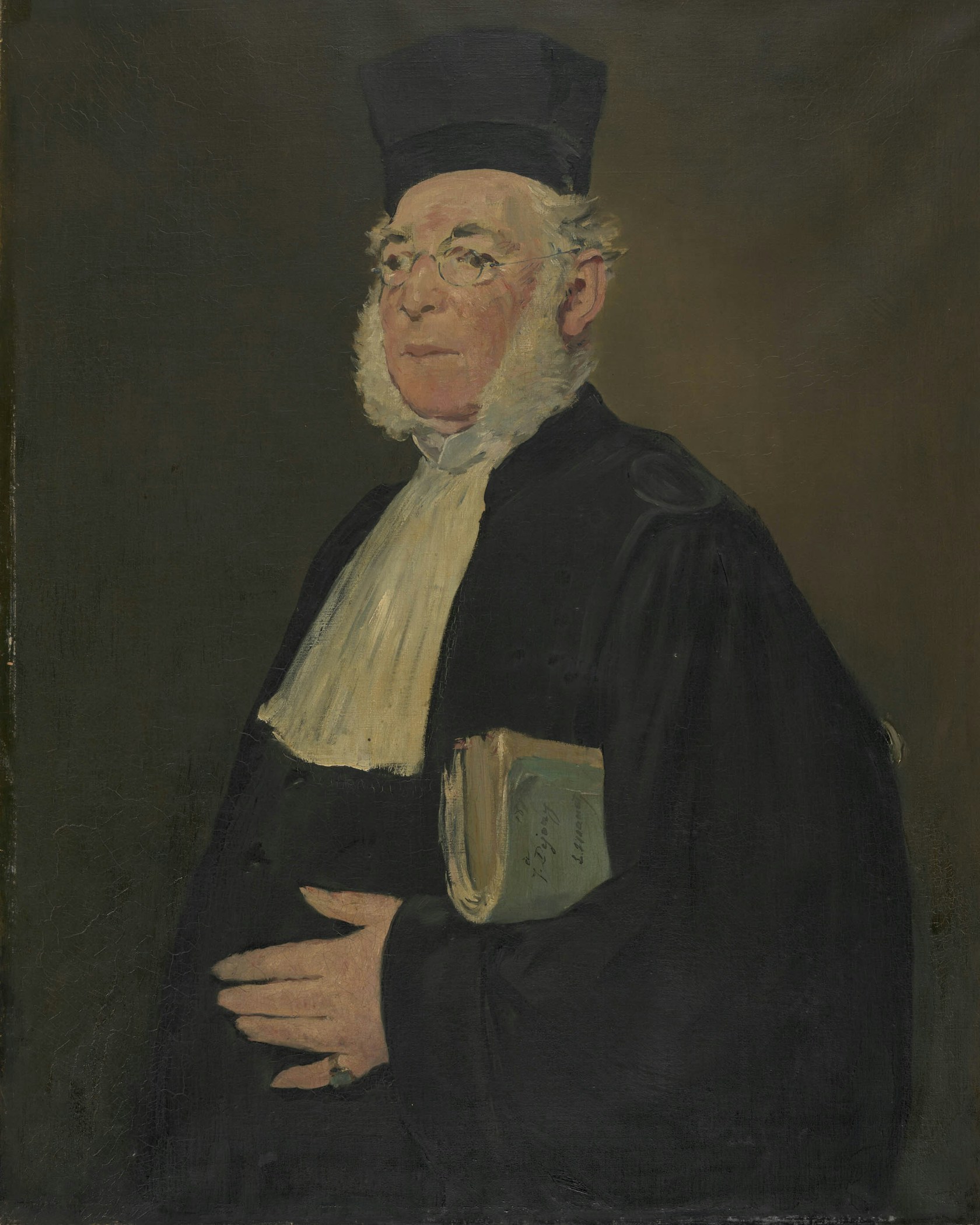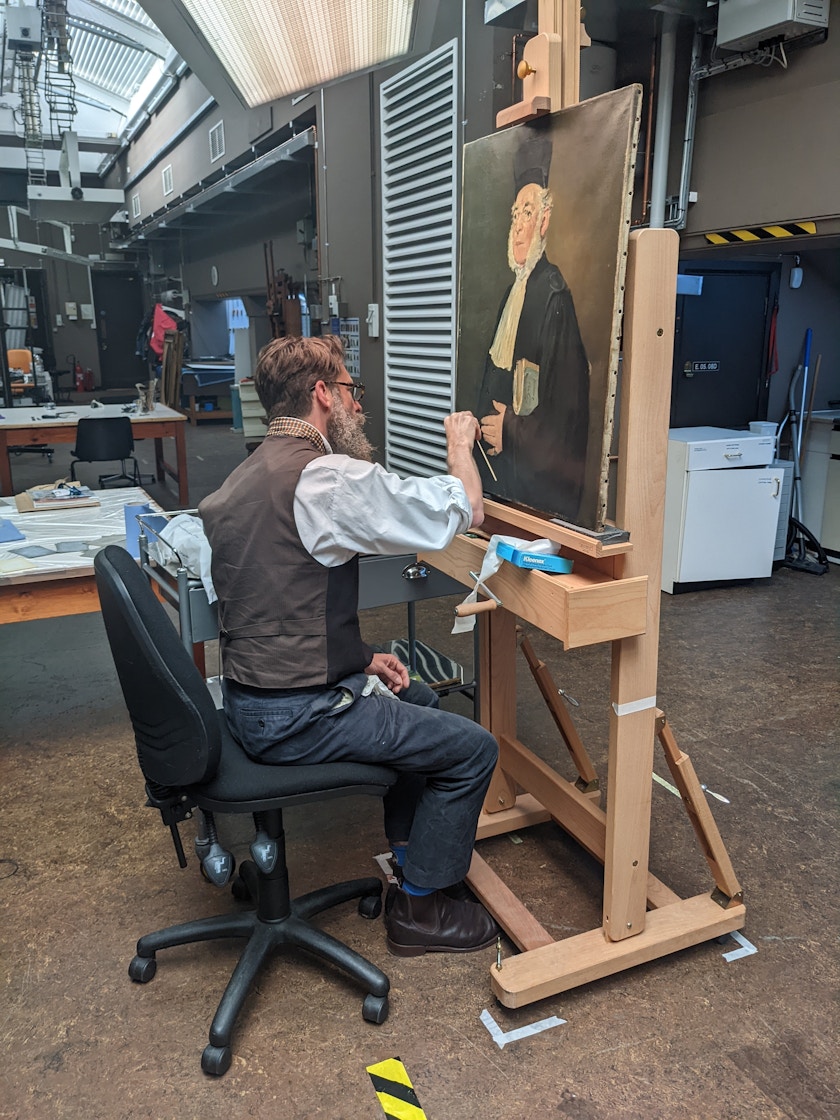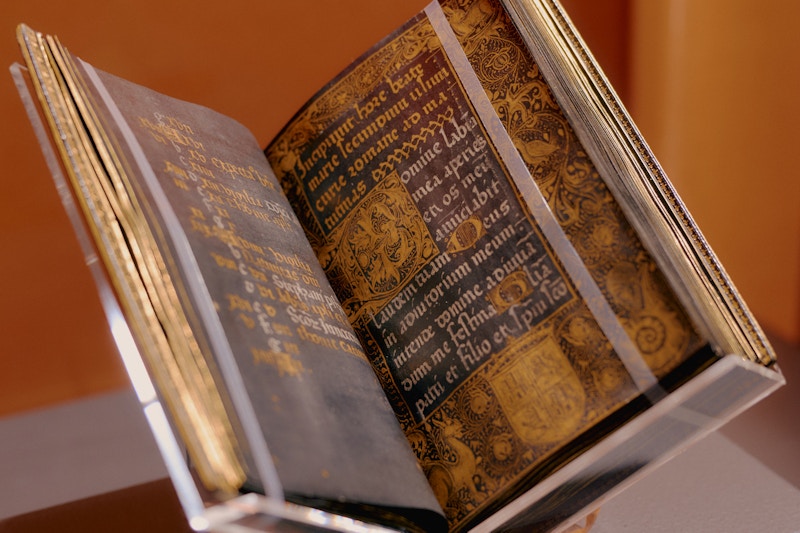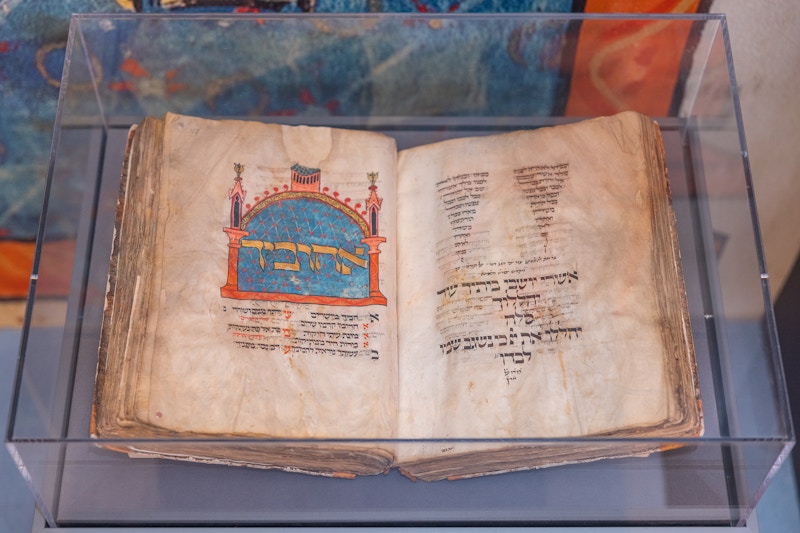
Courtesy of Amgueddfa Cymru – Museum Wales.
Held in a Private Collection for over 90 Years, This Significant Portrait By Manet Transforms After Restoration
The portrait of Manet’s guardian and mentor now presents the artist’s original intentions following treatment at Amgueddfa Cymru – Museum Wales, supported by the TEFAF Museum Restoration Fund
- By Amgueddfa Cymru – Museum Wales
- Museum Restoration Fund
Amgueddfa Cymru – Museum Wales is a family of seven national museums and a collections center which together tell the story of Wales. Established by Royal Charter in 1907, the Museum cares for Wales’ national collections, which are of international significance and comprise of more than five million objects and memories used to inspire future generations. From geology, botany, and zoology, to art, industry, social history, and archaeology—the collections span across the science, history, and culture of Wales and beyond.
The Painting
One of Édouard Manet’s (1832–1883) most significant late portraits, Portrait of Monsieur Jules Dejouy (1879) presents the painter’s cousin—an important figure in Manet’s life, who on the death of Manet’s father became something of a mentor and a guardian. Dejouy was a notable and successful lawyer, who was appointed to the French Imperial Court in 1849 as well as being a member of the Conseil de l’Ordre. His portrait offers a glimpse of a pensive moment in a day otherwise fraught with intense legal debate. Manet’s affection for his sitter comes out in the loose, spontaneous brushwork the painter used, conveying the sitter’s vitality, intelligence, and generous character.

Portrait of Monsieur Jules Dejouy (1879) before restoration. Courtesy of Amgueddfa Cymru – Museum Wales.
After being held in a private family collection for more than ninety years, the portrait was acquired by Amgueddfa Cymru in 2019 through the Acceptance in Lieu of Tax scheme—joining key Impressionist and Post-Impressionist works in their art collection, including three others by Manet: Effect of Snow at Petit Montrouge (1870), Argenteuil, Boat (1874), and The Rabbit (1881).
The work arrived at the museum in a relatively untouched condition, which is rare for a work of this period. This made its restoration doubly exciting for Chief Conservator Adam Webster who identified the need for technical examination and conservation to improve the understanding of the portrait, its presentation, and legibility as an artwork. Owing to its history prior to entering the Welsh national collection, the painting’s vibrancy was hidden under years of dust and yellowing varnish and there were structurally weak areas in both the painting and canvas that needed urgent attention. The frame was also damaged significantly and required specialist repairs by a frame conservator. Amgueddfa Cymru was granted the TEFAF Museum Restoration Fund in 2021 to restore the portrait to its full glory so it can be enjoyed by the public for years to come.

X-radiography of this area and similar cracks around the lawyer’s jabot have confirmed that Manet made changes in these areas of the composition. Courtesy of Amgueddfa Cymru – Museum Wales.
Technical Examination
Before commencing work on the structural conservation, a technical examination of the painting was carried out. X-ray technology was used to explore the background layers of the painting, tracing Manet’s journey in composing the portrait, and revealing that the painter made only two adjustments when creating it: the position of Dejouy’s hand and the length of his jabot. This discovery reinforces Manet’s familiarity with his sitter, as well as his certainty in how he wanted to portray him. A powerful microscope gave an in-depth examination of the colour pigments that Manet used for different parts of his composition—bringing out wonderful small details, almost like Impressionist paintings themselves.

This detail from the sitter’s beard shows the brushwork and palette employed by Manet. Courtesy of Amgueddfa Cymru – Museum Wales.
Restoration
For its restoration, the front and back of the painting were brush-vacuumed and cleaned with a smoke sponge, debris from under the stretcher and excess brown paper were removed, and the exhibition labels at the back of the painting were consolidated to ensure they were secure as a vital element for the history of the object. Major elements of the structural restoration were then undertaken. The surface of the portrait was cleaned using saliva and deionised water and, after microscope tests, the varnish was removed. The back of the canvas was then cleaned using a scalpel to remove cemented dirt.
To secure the structure of the work, strip lining was undertaken to address the weakness in the tacking edges as well as distortions in the canvas. In addressing the distortions, the back of the painting was left in contact with slightly damp blotting paper for five minutes. Then, it was left under a dry blotter with weights. Structural restoration methods were always first tested out in localised areas, before being used on the wider painting, to determine their safety and effectiveness. Finally, the portrait received a new coat of varnish and was glazed and framed.

Chief conservator Adam Webster during surface cleaning. Courtesy of Amgueddfa Cymru – Museum Wales.

Detail of the portrait during cleaning. Courtesy of Amgueddfa Cymru – Museum Wales.
The Display and Project Legacy
Thanks to TEFAF's support, Amgueddfa Cymru has now restored this important artwork by Manet to its full potential, ensuring its longevity and stability. Portrait of Monsieur de Jules Dejouy now sits beautifully in the museum’s wider collection and can be enjoyed by generations to come, both in the UK and internationally. The restored portrait went on display to the public at National Museum Cardiff in January 2023, along with an accompanying video of the restoration to demystify the process for museum visitors.

Portrait of Jules Dejouy going on display at National Museum Cardiff. Courtesy of Amgueddfa Cymru – Museum Wales.


